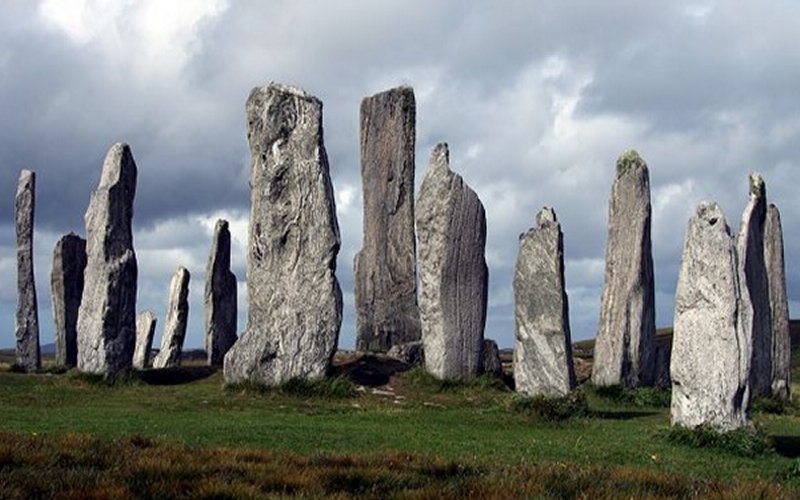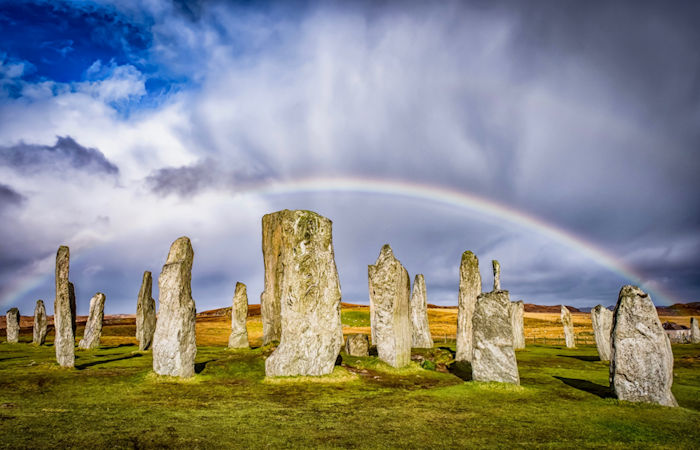Callanish Stone Complex: Sacred Place On The Isle Of Lewis In Scotland
A. Sutherland - AncientPages.com - The Callanish Stone Complex (Scottish Gaelic: Calanais) is located on the Isle of Lewis, the outer Hebridian island, west of Scotland. This megalithic landmark is very old and impressive; it originates in Neolithic Britain.
Situated on a prominent ridge overlooking Loch Roag, on Lewis (Western Isles), the Callanish stones are visible from a considerable distance.
Callanish Stones is located near Callanish village, Isle of Lewis, Outher Hebrids, Scotland. Image credit: Chmee2 - CC BY-SA 3.0
A particular atmosphere of mystery dominates over the impressive physical presence of the stones and their total dominance in the landscape.
The main monument at Callanish dates back to approximately 3,000 BC. The Isle of Lewis at the time was inhabited by Stone Age farmers who occupied small villages around the Outer Hebrides.
At Callanish, the monoliths were quarried from one of the oldest rocks in Britain, the so-called Lewisian gneiss stone, deriving from the Isle of Lewis, and erected carefully in a circle. The monument's stability was essential, and low mounds of earth and rocks were added to the base of each upright because of the problems of digging sufficiently deep sockets.
The central stone was set in place at this time. The three rows running away to the south, east, and west were likely added soon after. Today, the avenue comprises twenty stones and runs to the north.
A cross-shaped setting of standing stones is centered on a circle of rocks, which contains a vast, 4.75m high and 30cm thick megalith at the center, and a small, chambered cairn, which is 7m in diameter and is probably, a later addition to the complex.
All this gives clues to how vital the area was to prehistoric peoples.
Engraving from a paper by Henry Callendar, 1854
The arrangement - with lines of stones radiating in four directions from the ring - is unique. However, its purpose is unclear and does not explain whether the stone alignments were constructed at the same time as the ring or later.
However, the majestic Callanish Stones are associated with astronomical events, especially concerning the Moon's movements.
Aubrey Burl, in his book "Circles of Stone The Prehistoric Rings of Britain and Ireland," mentions Diodorus Siculus, the famous Greek historian who died sometime after 21 BC, who first provided an astronomical explanation of the site:
"He wrote of a 'spherical temple' in Britain, and this was believed to have referred to Stonehenge. However, the statement that 'the moon as viewed from this island appears to be but a little distance from the earth' refers to something impossible at the latitude of Stonehenge. Instead, it exactly describes the southern moon 'behavior' at Callanish, where it seems "to roll along the top of the skyline."
Callanish was a sacred place to ancient people, and it remained an active focus for the prehistoric religious activity for at least 1500 years.
Like many other prehistoric stone circles, Callanish's use focused on various ceremonies and rituals for centuries.
Whether these activities involved the whole community, part of it, or specifically chosen individuals at different times of the year or various stages in life is unknown.
At Callanish, the monoliths were quarried from local gneiss stone and erected carefully in a circle. The monument's stability was clearly important, and low mounds of earth and stones were added to the base of each upright because of the problems of digging sufficiently deep sockets. Credit: Adobe Stock - rachel bibby/EyeEm
Excavations showed that the burial chamber, as mentioned earlier, was a later addition to the complex and had been modified several times.
The land had been cultivated before the circle was erected; a wooden structure may have preceded it. Archaeologists found some human bones and pottery that dates back to about 2200 BC.
There are many myths and legends related to Callanish. The stones were said to be a council of pagan giants, turned to stone by a Christian saint, St Kieran. In another version, the stone material to build Callanish was brought to the island in ships and erected by "black men" under the direction of priests who wore cloaks of colored feathers.
Yet another legend has it that early at Midsummer Sunrise at Callanish, an entity known as the "Shining One" walks up the avenue, heralded by the call of a cuckoo.
The Callanish Stones Site is in charge of Historic Scotland.
Updated on February 24, 2023
Written by – A. Sutherland - AncientPages.com Senior Staff Writer
Copyright © AncientPages.com All rights reserved. This material may not be published, broadcast, rewritten or redistributed in whole or part without the express written permission of AncientPages.com
Expand for referencesReferences:
M. Aubrey B. Milligan Circles of Stone: The Prehistoric Rings of Britain and Ireland
More From Ancient Pages
-
 On This Day In History: Anders Celsius, Swedish Astronomer And Mathematician Was Born – On Nov 27, 1701
News | Nov 26, 2016
On This Day In History: Anders Celsius, Swedish Astronomer And Mathematician Was Born – On Nov 27, 1701
News | Nov 26, 2016 -
 Dreamcatcher: Powerful Protective Amulet Of North American Indian People
Ancient Traditions And Customs | Mar 20, 2020
Dreamcatcher: Powerful Protective Amulet Of North American Indian People
Ancient Traditions And Customs | Mar 20, 2020 -
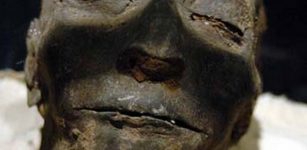 Nebiri, a ‘Chief of Stables’ – oldest case of heart disease in 3,500-year-old mummy
News | Aug 28, 2015
Nebiri, a ‘Chief of Stables’ – oldest case of heart disease in 3,500-year-old mummy
News | Aug 28, 2015 -
 3,000-year-old knight discovered at the Palidli necropolis
Civilizations | Aug 22, 2015
3,000-year-old knight discovered at the Palidli necropolis
Civilizations | Aug 22, 2015 -
 Your Neanderthal Genes May Prevent You From Metabolizing Drugs Efficiently
Archaeology | Jul 25, 2022
Your Neanderthal Genes May Prevent You From Metabolizing Drugs Efficiently
Archaeology | Jul 25, 2022 -
 Cato The Younger – Mortal Enemy Of Julius Caesar Was A Man Who Hated Luxury, New Ideas And Was Immune To Bribes
Featured Stories | Apr 17, 2021
Cato The Younger – Mortal Enemy Of Julius Caesar Was A Man Who Hated Luxury, New Ideas And Was Immune To Bribes
Featured Stories | Apr 17, 2021 -
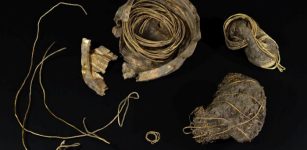 Startling 3,000-Year-Old Gold Bowl Decorated With A Sun Motif Discovered Is A Truly Unique Artifact
Archaeology | Oct 17, 2021
Startling 3,000-Year-Old Gold Bowl Decorated With A Sun Motif Discovered Is A Truly Unique Artifact
Archaeology | Oct 17, 2021 -
 On This Day In History: Sir Thomas Brisbane, Astronomer, Soldier And Governor Was Born – On July 23, 1773
News | Jul 23, 2016
On This Day In History: Sir Thomas Brisbane, Astronomer, Soldier And Governor Was Born – On July 23, 1773
News | Jul 23, 2016 -
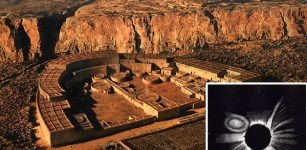 Chaco Canyon’s Piedra del Sol Petroglyph Depicts An Ancient Total Eclipse Visible In The Year 1097
Archaeology | Aug 12, 2017
Chaco Canyon’s Piedra del Sol Petroglyph Depicts An Ancient Total Eclipse Visible In The Year 1097
Archaeology | Aug 12, 2017 -
 On This Day In History: Roman Emperor Caligula Was Born – On August 31, 12 AD
News | Aug 31, 2016
On This Day In History: Roman Emperor Caligula Was Born – On August 31, 12 AD
News | Aug 31, 2016 -
 Huge Lost Ancient Underground City Of Samen Finally Reveals Its Secrets
Archaeology | Apr 28, 2017
Huge Lost Ancient Underground City Of Samen Finally Reveals Its Secrets
Archaeology | Apr 28, 2017 -
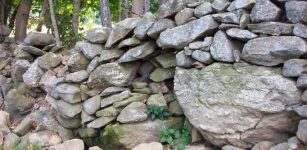 New England’s Abandoned Stone Walls Deserve A Science Of Their Own
Featured Stories | Jan 5, 2024
New England’s Abandoned Stone Walls Deserve A Science Of Their Own
Featured Stories | Jan 5, 2024 -
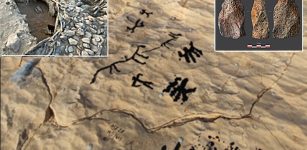 Unique Finds Discovered In Oman – Rub’al-Chali Desert Reveals Its Secrets
Archaeology | Apr 20, 2023
Unique Finds Discovered In Oman – Rub’al-Chali Desert Reveals Its Secrets
Archaeology | Apr 20, 2023 -
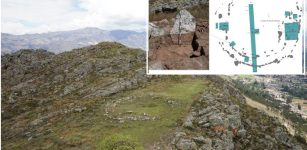 Callacpuma’s Megalithic Stone Circular Plaza Was Constructed Using A Technique Previously Unseen In The Andes
Archaeology | Feb 15, 2024
Callacpuma’s Megalithic Stone Circular Plaza Was Constructed Using A Technique Previously Unseen In The Andes
Archaeology | Feb 15, 2024 -
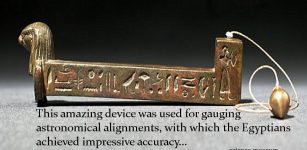 Merkhet – An Ancient Egyptian Timekeeping Instrument
Ancient History Facts | Jul 3, 2018
Merkhet – An Ancient Egyptian Timekeeping Instrument
Ancient History Facts | Jul 3, 2018 -
 Unusual 6,000-Year-Old Gold Objects Discovered In Hungarian Tombs – More Mysterious Conical Hats?
Archaeology | Mar 25, 2021
Unusual 6,000-Year-Old Gold Objects Discovered In Hungarian Tombs – More Mysterious Conical Hats?
Archaeology | Mar 25, 2021 -
 Mysterious Utah: Prehistoric Ancient Petroglyphs Of Santa Clara River Reserve
Civilizations | Oct 2, 2018
Mysterious Utah: Prehistoric Ancient Petroglyphs Of Santa Clara River Reserve
Civilizations | Oct 2, 2018 -
 Mystery Of The Lost Biblical Kadesh Where Moses Was Punished By God
Biblical Mysteries | Oct 17, 2017
Mystery Of The Lost Biblical Kadesh Where Moses Was Punished By God
Biblical Mysteries | Oct 17, 2017 -
 Roman Empire’s Emerald Mines In The Egyptian Eastern Desert – New Evidence
Archaeology | Mar 2, 2022
Roman Empire’s Emerald Mines In The Egyptian Eastern Desert – New Evidence
Archaeology | Mar 2, 2022 -
 Jade Emperor – Supreme Ruler Of Heaven In Chinese Mythology
Chinese Mythology | Feb 21, 2019
Jade Emperor – Supreme Ruler Of Heaven In Chinese Mythology
Chinese Mythology | Feb 21, 2019

